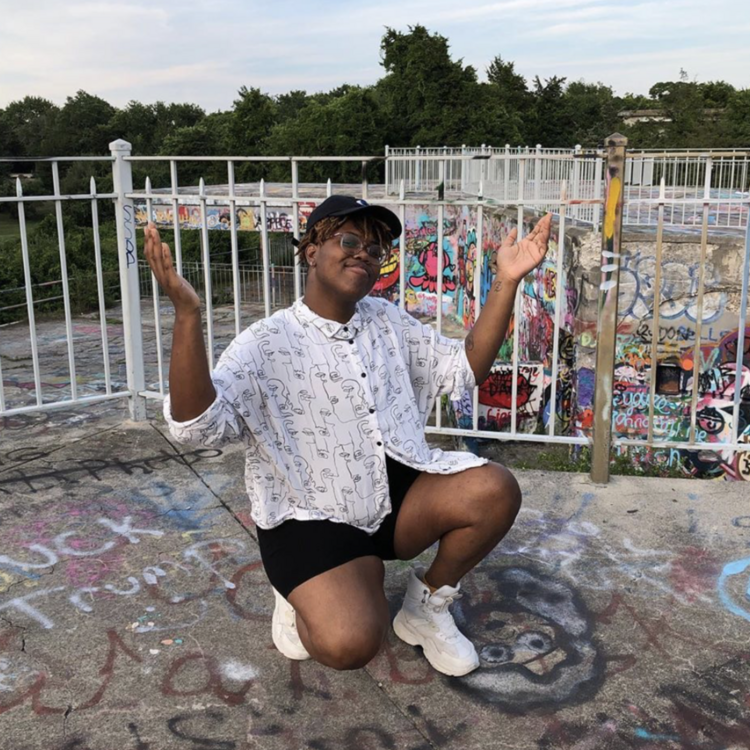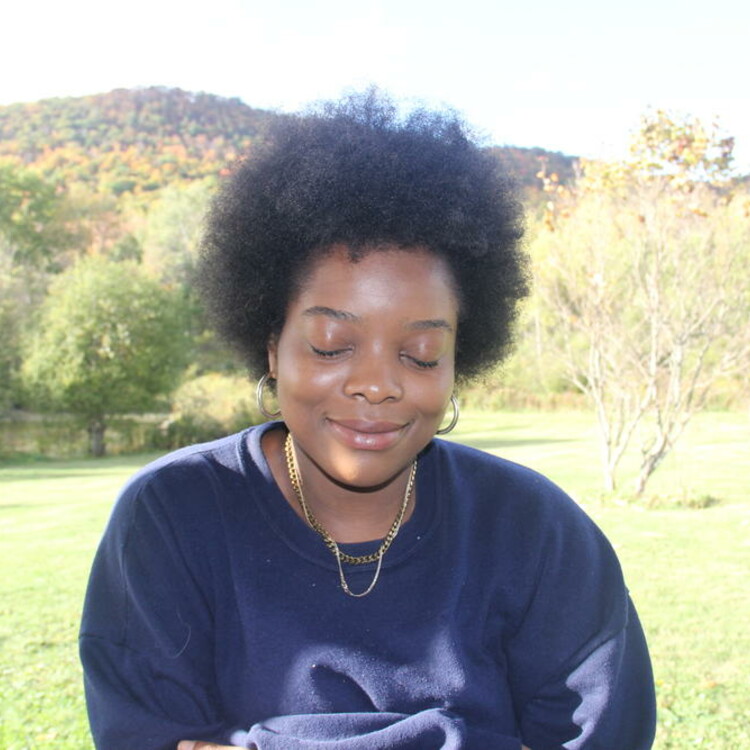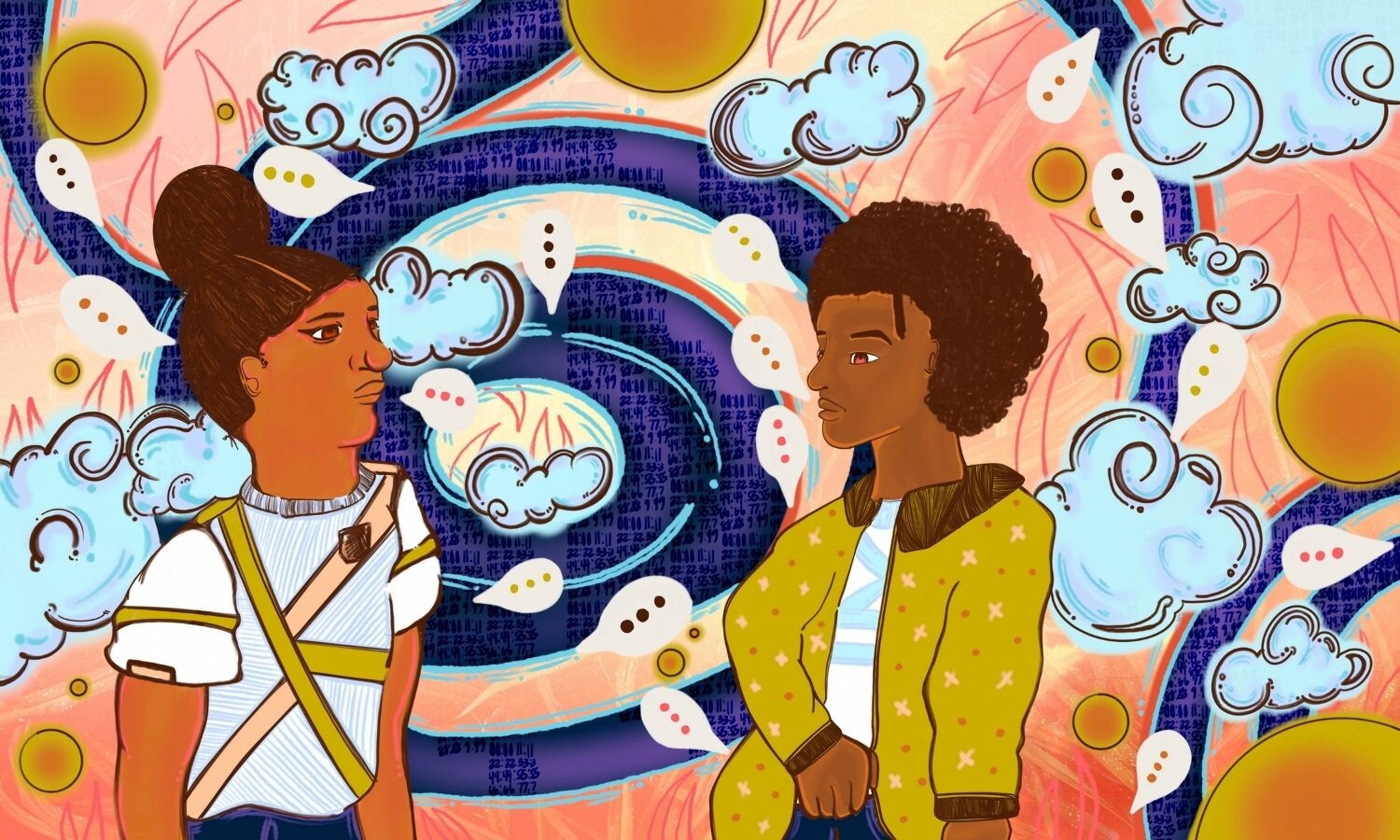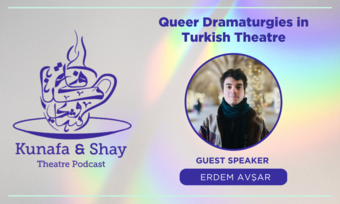Nkenna Akunna: I read the first chapter of Christina Sharpe’s In the Wake yesterday, a book that interrogates how white supremacy and chattel slavery have produced a climate for anti-Black violence and gratuitous Black death. I had to fall asleep. It was too much. I feel like my body was recognizing that everything Black people are doing, all the ways we are existing, is not necessarily living. It’s all in the wake of death, in the space left behind by so many legacies that wanted to, and still want to, kill us.
It made me think a lot about the work the two of us do as Black queer artists and why we do it. I’m currently working on a play called Some of Us Exist in the Future about a Black immigrant woman making some of these discoveries, so I am thinking of theatre within this concept of “wake work,” particularly in this past year, when so many of us have passed on. As we think about queer futures in theatre… I don’t know how we move forward without reckoning with death in a much deeper way.
JD Stokely: That’s real. Last week I tried to write three succinct questions for our conversation today and ended up going on my own little rants around white supremacy, white supremacists, and domestic terrorists in the United States, feeling like they are able to move freely and feel no consequences. One of the things I think a lot about is the ways safety and justice feel like a white fantasy.
There was a tweet by writer Saeed Jones that was making its rounds on social media after the siege on the Capitol, which said, “Black people can’t even sleep in bed safely at night without getting shot and killed by police. But when white nationalists attempt a coup, suddenly cops can’t even find their handcuffs.” The last time we spoke, we were speculating what a Black queer future looked like where we were nourished, safe, and supported. We named that the liberatory process of dreaming and conjuring new worlds is impossible without rest. But today I’m wondering how we as Black queer people can do the necessary work of dreaming a new world when rest is so vulnerable, because there’s the threat of death even in sleeping. And who gets to be restful, who gets to feel safe, who gets to be fully in their bodies...
Nkenna: How have you been sleeping?
Stokely: Really badly.
Nkenna: I go to bed at 9:00 am. It’s a bit of jet lag, but it’s not all jet lag...
How do we dream when safety is a myth? Not to say that all our dreams are nightmares, but all our dreams are undoubtedly colored by the fact that we’re not sleeping well and or safely. Part of me is like, we can’t ever rest, but there’s also a weird comfort that even in sleep we’re not lying to ourselves. And so, because we’re not lying to ourselves, we can trust in dreaming as a way to create futures for ourselves.
Something that has been so frustrating to me is how much shock and surprise there still is in response to (routine) white supremacist violence. When do the foundations of the world we exist in stop surprising us? How do our dreams look then? This kind of shock has been the source of my dissociation recently. We can’t build the world we want to see if we’re still in shock. The places that feel like comfort don’t work, and history—even just the past decade—has taught us that time and again. There’s a part of me that wants to reject the desire to pretend there was ever a normal to go back to.
These days, dreaming can feel like being haunted, and there is something useful about being haunted. It’s a reminder that we must be honest. I don’t know how you can build without being honest about what you’re working in.
As we think about queer futures in theatre… I don’t know how we move forward without reckoning with death in a much deeper way.
Stokely: I’m curious about the productivity of being haunted. I reject the idea of “linear time” and instead imagine Black queer time as a spiral. You know when people say that history repeats itself? Time as we understand and experience it really doubles back on itself like a spiral. As an artist, what I find inspiring about spiral time is that we’re just as much in conversation with the past as we are in conversation with many speculative possibilities for the future. It can be productive to look back to find stories we knew existed but have been erased or forgotten.
Haunting has a negative connotation, but what are the positive connotations of some sort of spiritual haunting or recognition of spirits as we imagine the future? One of the things I love about your piece Some of Us Exist in the Future is how time collapses for your main character, a Black queer woman. She exists somewhere between the earthly realm and a spirit realm informed by Indigenous Nigerian mythologies, which start to shape her reality. To me, that is an example of how “a haunting” is the past’s way of having a conversation with the present. How else is spirituality and ancestral practice informing your work?
Nkenna: The spirit realm can play a huge role in our journeys towards the self. As I get older I acknowledge that this realm includes my ancestors, too—I can’t think of self-knowing outside the context of spirit and those who came before me guiding me towards something. And then being in touch with the truest versions of myself always feels like a prerequisite to the work.
I feel like the more I experience time, the more I experience spirit. A couple of weeks ago, artist and PhD student Mysia Anderson mentioned to me how spirituality exists in the mundane in my writing. I care about public journeys and what it is that different characters who don’t know each other happen to share because they’re in a space at the same time, or how a window being open and music coming through it shifts what is possible in that room.
I don’t know how Black people exist without spirit, because this world fundamentally has never marked us as human, in fact it was built on our non-humanness. In my work, my characters dissociate a lot, and so much of their journeys are about them getting back into their bodies.
Stokely: I think disassociating is a type of dreaming and a type of rest. Sometimes that’s the only way to experience respite in a very anti-Black world without feeling like your body is left vulnerable. I welcome any kind of rest Black people can find these days. Maybe that’s just what it means to be able to rest and imagine right now as Black queer folks. My own work has been about haunting and spirituality without me even knowing that’s what I was doing.
Ten years ago, I wrote The (Sexual) Liberation of Mammy, a play that tried to combine the blackface caricature of Mammy with the role of a Theatre of the Oppressed “Joker”—the person who guides actors and audience members through games and exercises. My teacher used to call the Joker a “difficultator” because it was their job to trouble the world of the play or rehearsal room. So my play revolved around a Black lesbian who’s gifted a mammy statue, which eventually comes to life and haunts her. This mammy trickster character revealed anti-Blackness and homophobia present in the main character’s closest relationships with her girlfriend, best friend, and mother.
Now, the work I do with UnBound Bodies Collective thinks about how to create healing for queer and trans people of color in public space. We create containers for performances to happen and invite community members to be joyful with us and interact with and respond naturally to objects we’ve created. In the fall of 2019, we staged The Stoop in downtown Boston, which was an investigation into Black care and tenderness, inspired by the story of one of the last Black hair stores closing in a Boston neighborhood.
We began exploring Black hair care as a display of tenderness, and stoop culture as a site where Black hair gets done, among other things. We created a sixty-foot-long braid made out of synthetic hair, rope, yarn, and fabric, and wove seeds, beads, and prayers into it. Without knowing it, we made a shrine to Black tenderness in downtown Boston.
So much of our collective’s work has been about publicly fighting against the haunting legacy of colonialism and anti-Blackness in the city by literally changing the spiritual energy of spaces that we do work in. Taking the ghost of this site of Black hair care that no longer exists and being like, “We’re still here. Remember us.”
I think disassociating is a type of dreaming and a type of rest. Sometimes that’s the only way to experience respite in a very anti-Black world without feeling like your body is left vulnerable.
Nkenna: That’s so moving. This is what I mean when I say spirit is what leads us, because, like you said, you created that without even really knowing what you were doing. And you’re only able to see all of what was happening in hindsight.
I was born and raised in London and since then have spent a significant portion of my life in New England. The significance of being on this land named for this specific group of settler-colonists, what it means for my body to be in that journey, and how my body sits and feels on this land… The work comes about, or the writing can only happen, once the space has been shifted, once the space feels safe enough. And that safety is temporary.
My play good god, which I worked on with Ngozi Anyanwu, is about three Black teens who meet in a New England college their freshman year. One of them is from London, one of them is from New York, one of them is from Lagos, and they all have the same name, which is what draws them to each other. They find themselves on this land before they even realize what it means and who else is there. Who are the Black people who were there before them? And what does it mean for them to be in conversation with those people?
We workshopped the play over Zoom last summer—that the workshop could even happen felt like such a lifeline. It was during the protests for abolition. So much was happening and people were dying. There was a petition going around to officially change the name of the State of Rhode Island and Providence Plantations. All but one in our company were Black. Without knowing it, so much spiritual work was taking place whenever we met. There was such a fullness. I felt an overflowing all the time and, honestly, I was afraid of it.














Comments
The article is just the start of the conversation—we want to know what you think about this subject, too! HowlRound is a space for knowledge-sharing, and we welcome spirited, thoughtful, and on-topic dialogue. Find our full comments policy here